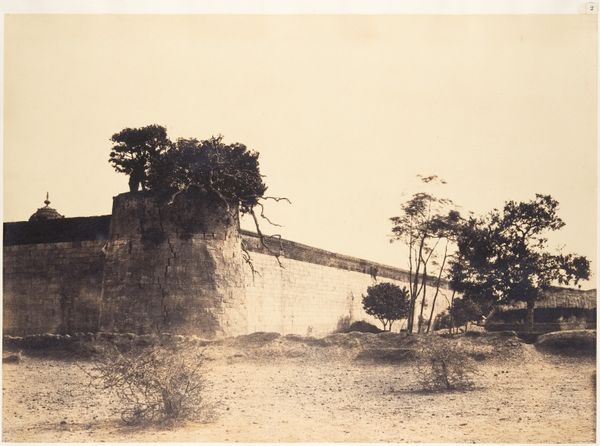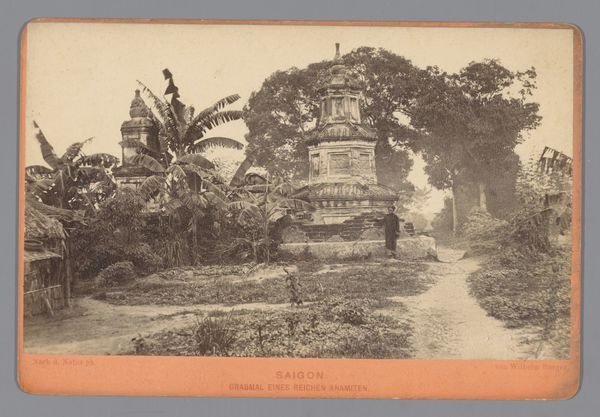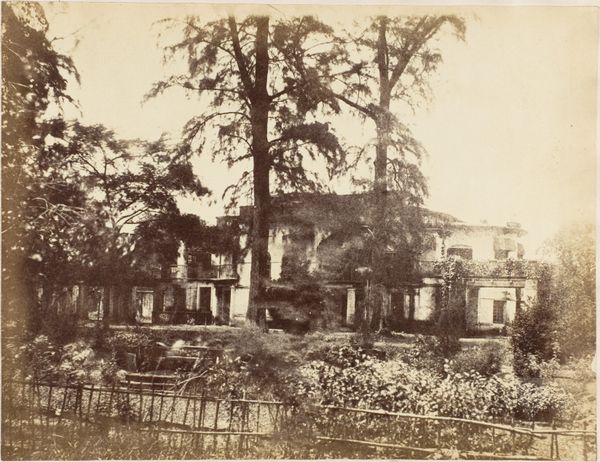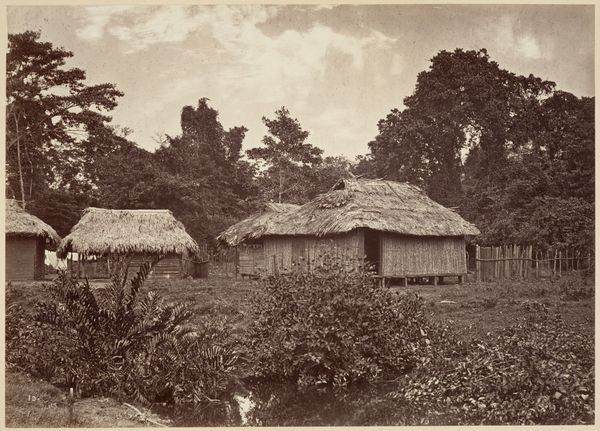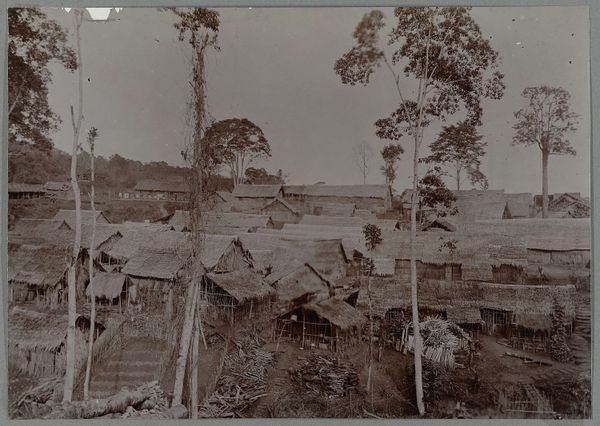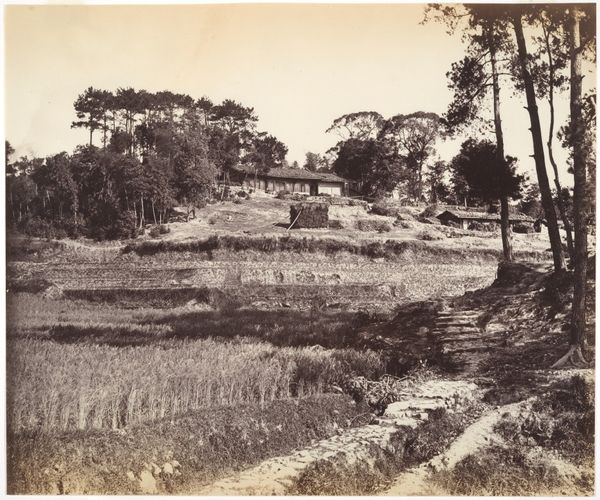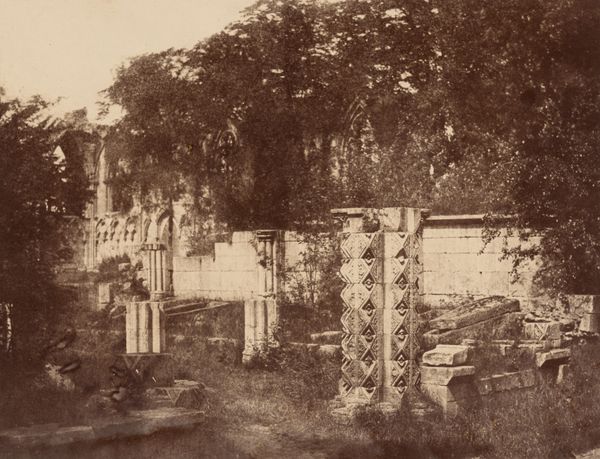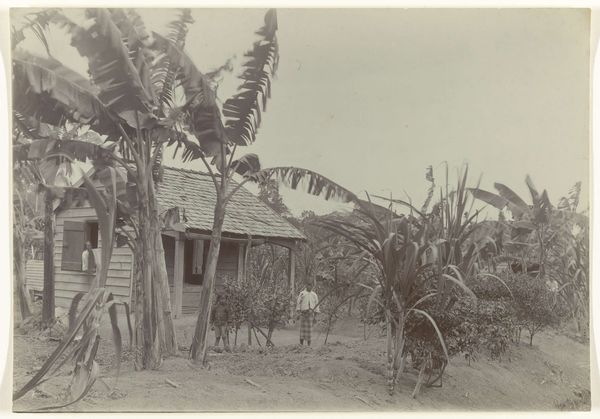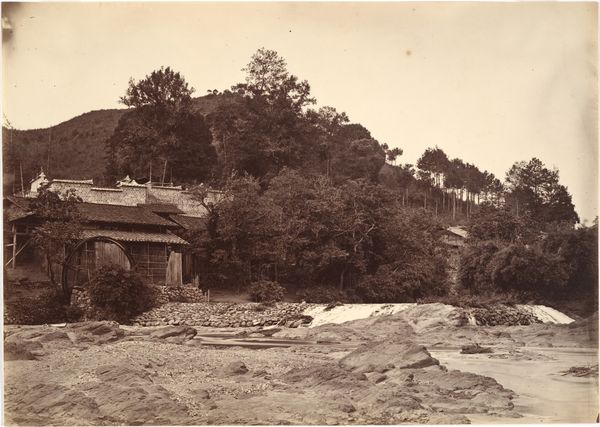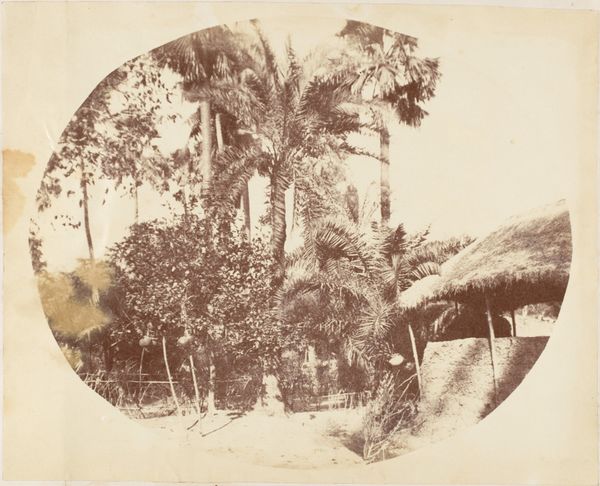
albumen-print, photography, architecture
#
albumen-print
#
landscape
#
photography
#
architecture
Dimensions: Image: 33.3 x 42.4 cm (13 1/8 x 16 11/16 in.) Mount: 54 x 70.8 cm (21 1/4 x 27 7/8 in.)
Copyright: Public Domain
Curator: This is Désiré Charnay's photograph, "La Prison, à Chichen-Itza," taken sometime between 1857 and 1889. Editor: The sepia tone gives it such an ethereal quality. The geometry of the architecture starkly contrasts with the surrounding wilderness, almost overgrown. Curator: Charnay was a pioneering photographer and explorer, and this image is part of a broader series documenting pre-Columbian Mesoamerican sites. He wasn’t just capturing buildings; he was revealing the story of power, colonialism, and the construction of historical narratives. Editor: It's fascinating how the structural elements lead the eye. Look at the horizontal lines, the rectangles of the structure itself against the organic chaos around it. Curator: Precisely. And the photograph embodies an inherent tension. The architecture symbolizes a complex, hierarchical society, while the encroaching foliage speaks to the forces of nature reclaiming what was built, and indeed was a kind of natural, social protest. Editor: Nature both obscures and highlights the formal qualities, the stone, the arrangement of solids and voids. There is a rhythmic, almost musical arrangement to its individual parts. Curator: We should remember this image comes from a period of intense European interest in the 'discovery' and 'documentation' of ancient civilizations. Charnay's work, like that of many of his contemporaries, participated in the creation of a colonial gaze, reinforcing European dominance in interpreting the past. How did this influence his composition? Editor: An excellent question. From my perspective, that framing underscores the architectural presence. However, I also observe how the tonal range subtly brings the stonework forward, lending a monumental quality that resonates beyond historical context. Curator: The composition certainly highlights a sense of mystery, or even foreboding given that name. It also stands as a reminder of the politics inherent in image-making. Editor: It does prompt us to consider both the immediate visual impact alongside the intricate layers of meaning embedded in its photographic artifice.
Comments
No comments
Be the first to comment and join the conversation on the ultimate creative platform.


